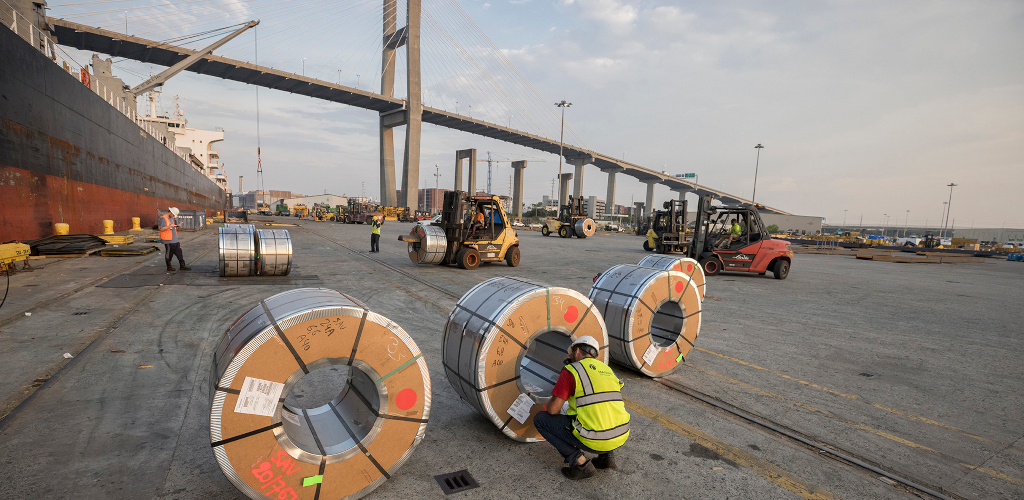Breakbulk Veteran John Vogt Presents the Latest in his Series on Incoterms

John Vogt, former Halliburton vice president of global logistics, presents the latest in his series of articles on Incoterms, a set rules that define the responsibilities of buyers and sellers in international and domestic trade contracts. New instalments are published each month in BreakbulkONE.
A Free Trade Agreement, or FTA, is an agreement between two or more countries regarding trade, with one of the cornerstones being a no or very low duty regime for some or all goods crossing the borders.
For the logistics professional, this means that trade between the countries may well encompass raw material in one direction, and semi-finished or finished goods in the reverse. The agreement will also have special rules for determining the Country of Origin, or CoO.
The logistics professional will therefore be dealing with bulk products and containers respectively and will have to be very knowledgeable to ensure that the correct CoO is utilized in the declaration to the Customs Authorities.
While there are many FTAs, the primary reason for one is to foster the growth of trade between these countries in preference to other countries. The most successful trade agreements are when both countries derive nearly equal benefits and are therefore committed to the agreement.
An FTA where there is an imbalance of trade is not as sustainable in the long term, and often there is a struggle to fully implement the agreement.
Take, for example, a large industrial nation signing an FTA with a small, relatively non-industrialized country. This may benefit the large nation for access to raw materials or low-cost labour. But low-cost labour means loss of jobs in the large nation, and the use of raw materials outside of the smaller country means a loss of revenue to the country; both create current and future issues.
Beware of these, as countries then start to adapt the understanding to suit them, often delaying goods and adding unforeseen costs. This happened to the author where a country with an FTA with the USA would not allow the goods to pass at the FTA tariffs if they passed through another country on the route.
A correctly developed and sensible FTA adds value to the countries involved in the agreement over the long term. The US, Mexico and Canada have had the North American Free Trade Agreement for many years. In 2020 this was renegotiated to bring the agreement into a more equitable partnership with new priorities. It addressed minimum wages, rules of origin (remember the CoO combined with the customs classification will determine the duty rate), currency manipulation, digital trade, corruption, intellectual property rules and other issues.
While there are many different FTAs around the world, such as Mercosur in Latin America, ASEAN in Asia and the EU itself, these all allow for the member nations to achieve some form of trade advantage between the member countries.
For the supply chain, this puts a different focus on the economics. It may be feasible to move goods to a partner country which has either labour or skills particularly required for the goods to be enhanced or converted, and then moved back to the sending country for final completion and distribution.
The CoO can also change with no duty add if the goods are predominantly converted in the partner country, which may add to the ability to sell to many parts of the world. Remember, the CoO rules in these agreements may be very different from what is applied to the general imports in a country.
The logistics professional must help the company to choose the appropriate location to do specific types of work in the most advantageous country with the FTA. That means not just being skilled in the FTA rules, but also the capabilities of the countries participating in the FTA relative to one another.
If one country has primarily raw materials, one has lower cost skilled labour and the other a larger market with advanced transportation capability, then the combination of these should be able to deliver products to the market at a lower cost.
While the manufacturing capability belongs with manufacturing specialists, and the purchase of raw materials with procurement, the ability to tie the whole into an integrated capability covering movement, tariffs and distribution rests with the logistics professional.
The total cost of the goods produced must be considered, and here the correct Total Cost of Ownership, or TCO, needs to be calculated.
The TCO involves all the costs associated with the production of a finished product for sale including all logistics costs as well as the working capital that is involved in the whole process. As such it is far more comprehensive than a simple accounting accumulation of direct costs and offers far better decision making.
This will be the subject of the next article!
About the author:
 John Vogt has his own consulting company and, at the end of his 42 years in industry around the world, was the Vice President of Global Logistics for Halliburton. Thereafter he spent five years as a Professor of Record for the University of Houston-Downtown MBA for International and Supply Chain courses. He has experience as a Board Director and has travelled the world to improve trade. In his career, he has driven the correct use of Incoterms as part of the trade improvements he has implemented to drive efficiency and effectiveness.
John Vogt has his own consulting company and, at the end of his 42 years in industry around the world, was the Vice President of Global Logistics for Halliburton. Thereafter he spent five years as a Professor of Record for the University of Houston-Downtown MBA for International and Supply Chain courses. He has experience as a Board Director and has travelled the world to improve trade. In his career, he has driven the correct use of Incoterms as part of the trade improvements he has implemented to drive efficiency and effectiveness.
MAIN PHOTO: breakbulk operations at Ocean Terminal, Port of Savannah. CREDIT: Georgia Ports Authority
